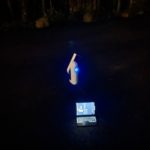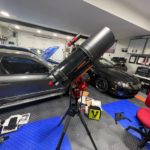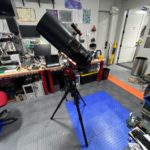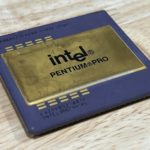I thought it would be interesting to share some thoughts after my first year with the Tesla Plaid. I drove about 6000 miles in the Plaid, and about 6000 more miles across 8 other ICE cars, not including my wife’s BMW X5. Clearly I drove the Plaid the most, in part because of convenience (always full of power), and in part a deliberate choice.
The ‘always being full of power’ is certainly something you grow to appreciate. I charge the car every night, and every morning it is full of happy-go-lucky leptons. While it isn’t particular hard to get gas, it is still a 10 min drive from my house in the West Hills.
I didn’t drive the car on any long trips (more than an hour), and probably never will. I have other cars for that. This car has the purpose of getting me around town as well as producing smiles. Range is not the most important factor, but the 390 miles provided is certainly adequate. I make extensive use of the foot potentiometer, and make it a practice to launch the car with the factory launch control every day.. at least once, often twice. I have discovered with the launch-control I can do 0-60 in my driveway, which is awesome. I am getting close to needing new tires…. I suspect I’ll get 8000 miles out of the Michelin Pilot 4Ss I have on there… about what I would expect given the abuse.
Any conversation about driving the Plaid starts with the power. Indeed the 1000hp feels like 1000hp, but more like it is coming from a V16 engine with nearly perfect torque. 0-60 in 2 seconds just doesn’t get old… and the 0-150 in 9.4ish seconds is equally amazing. Even more valuable is the availability of most of this acceleration in sub-optimal conditions. Even with a terrible road surface you can manage a mid to high 9 second 1/4 mile time. In a straight line the traction control algorithm is downright fantastic. You rarely get any wheel spin noise at all, and if you do it is for a few hundred ms at most. Even in pouring rain I can get mid 3 second 0-60s, which is mind boggling.
I have found that most passengers are just uncomfortable with the acceleration, especially above 60mph. On the flip side, most 10 year olds thinks it is spectacular. The change in power from 90% SOC to 50% SOC is noticeably, but not disastrous. If you were blindfolded and didn’t drive the car a lot I suspect most people couldn’t tell the difference. Below 50% SOC you can notice it more.
The traction control while turning is downright terrible. It has been calibrated such that if the wheel is turned more than about 5 degrees the power output is significantly cut. It still has power, but compared to the mind altering straight line power it is very noticeable. It is no doubt tuned to keep people from loosing control due to excessive acceleration while cornering. Track mode changes those dynamics a bit and allows more shenanigans, but still much less than many other fast cars.
The brakes work, and they can stop the car, but their biggest limitation is in total energy dissipation capacity. One or two hard stops from 150mph works just fine, but the system heat capacity is low enough that any more added heat will overwhelm the system, and you can quickly find your self running out. Tesla is offering a Ceramic Brake option, but it isn’t available yet. I would opt for that in the next version. Around town you probably won’t notice, but if you do some serious spirited driving and track days you will.
The yoke steering wheel was a conversation starter from the beginning. I would summarize one year of using it like this: It is a steering wheel. It steers. Beyond that, it is not anything magical, nor is it something horrid. The better view of the dash and the road is nice, and noticeable. Parallel parking in tight areas is worse. It mostly fades away as not that important compared to other dynamics in the car.
The turn signal buttons are at the very top of the suck list, and they are perhaps the single most negative thing after 1 year of driving. They just are not intuitive enough, or common enough, to replace the familiar stalk. They work, and you can use them, but it takes more concentration and effort, and slows down transitions. It is just not a very well executed idea.
Interior quality is exactly on par with what I expected it to be. It is nice Lexus level, not Mercedes. It has actually worn well, but then again I don’t have much to wear it with. My 10 yr old daughter has spent lots of time riding in the back seat without complaint, and the white interior still looks perfect.
Maintenance has been a total of .. well .. nothing. I plug it in, it drives. Every day. Perfectly. I have not been back down to the Tesla dealer since I picked the car up new.
There are a few things that have surprised me:
(1) I am amazed I have not broken an axel. I launch the car all the time, and the acceleration is just brutal on the drivetrain. 1.3gs of acceleration needs a lot of twisting force, and I’m just surprised it has not snapped.
(2) The roll on acceleration is also surpassingly harsh and snappy. It seems like if I did this in most of my other cars something would break.
(3) The lack of noise – It is fantastic in terms of not yelling to everyone within a 2 mile radius that I’m being a jackass, but it is also unceremonious. A positive more often than a negative, but a disappointment in the soul of the beast. When I drive my 1100whp GTR that soul is ever present and window shaking. 😉
Perhaps my biggest takeaway from this last year is enthusiasm for the future. Lepton powered cars need not miss the excitement. This is a Tesla, in Tesla form and finish, but the potential for others to do DIFFERENT and awesome things with electric powertrains seems limitless. Just like many other petrol-heads I can see the decline of the internal combustion engine as the end of an era, but one can also see the beginning of another, and it doesn’t have to suck.

































